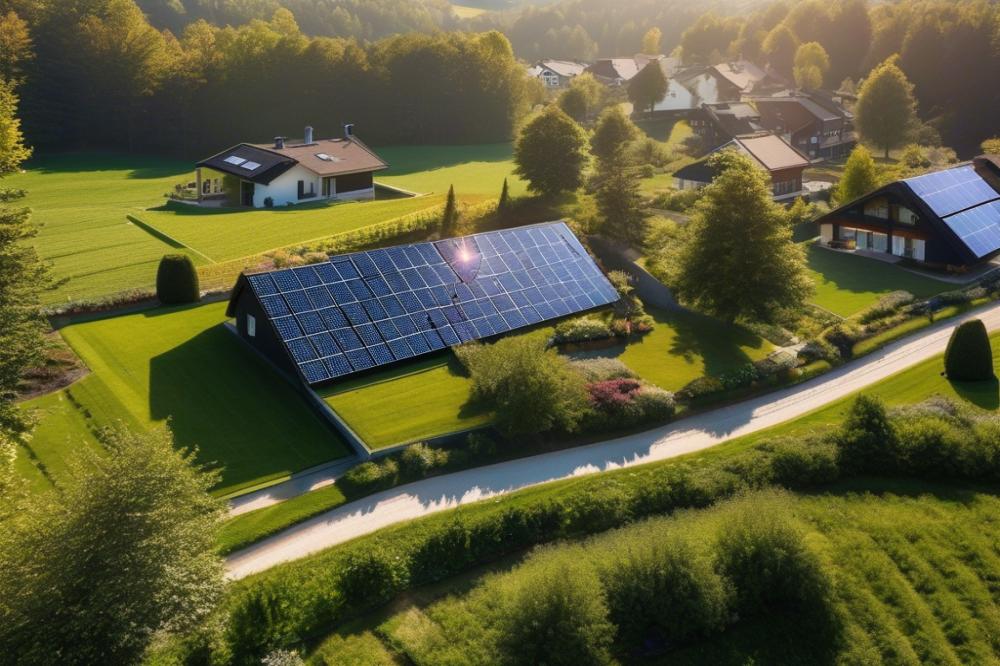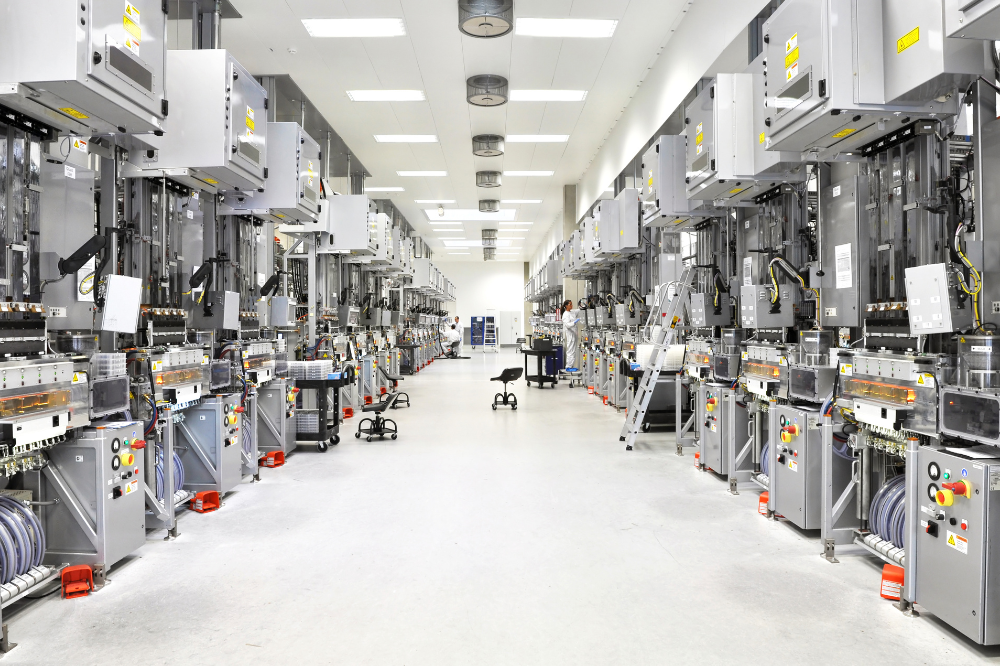Introduction
Overview of the rise of photovoltaic systems in Germany
The landscape of energy production in Germany has seen a remarkable transformation in recent years. More and more homeowners choose photovoltaic systems to harness the power of the sun. This shift reflects a significant embrace of renewable energy. With technological advancements and decreasing costs, solar panels have become a common sight on rooftops across the nation. Many German cities have witnessed this rise firsthand, showcasing a commitment to sustainable practices.
Importance of renewable energy and the energy transition
Renewable energy plays a crucial role in the country’s energy transition. As fossil fuels pose environmental challenges, alternatives like solar energy are vital for a cleaner future. The urgency to shift to renewable sources highlights both ecological and economic reasons. Energy independence is increasingly important for many nations, and Germany is no exception. By investing in clean energy, Germany not only enhances its sustainability but also combats climate change.
Introduction to solar power selling and its benefits for homeowners
Selling surplus energy back to the grid presents a unique opportunity for homeowners. Through grid connection and net metering, they can turn their solar power production into profit. The feed-in tariff system further incentivizes this practice, ensuring that individuals receive fair compensation for their contributions to the energy system. These benefits often lead to substantial reductions in electricity bills, making solar energy an appealing choice. Homeowners can take pride in contributing to a cleaner planet while supporting the collective energy transition.
Understanding solar power selling

Solar power selling refers to the practice where homeowners sell excess energy produced from their solar panels back to the grid. This process is becoming increasingly popular as more people opt for renewable energy solutions. Homeowners with photovoltaic systems often generate more electricity than they consume, especially on sunny days. The surplus energy they create can then be returned to the grid.
Generating Excess Solar Energy
Using the sun’s rays, homeowners convert sunlight into usable electricity. Photovoltaic systems harness solar energy, making it a clean, sustainable source. When the energy generated exceeds the household’s needs, this extra electricity must be managed effectively. Many homeowners monitor their energy usage and solar output closely to maximize their efficiency.
Grid Connection Requirements
Setting up a grid connection involves specific regulations and procedures. Homeowners need to apply with their local utility company to connect their solar systems to the electricity grid. This application often includes technical details about the system size and the inverter used. Compliance with electricity regulation is vital to ensure safety and reliability.
Importance of Clean Energy Contributions
Contributing clean energy to the grid helps combat climate change. Solar energy provides a renewable alternative to fossil fuels. By selling excess electricity, homeowners play a role in the larger energy transition in Germany. They help reduce overall carbon emissions and bolster the use of sustainable energy sources. Policies like the feed-in tariff incentivize these contributions, making it financially beneficial for many.
Net metering also provides homeowners with advantages. This arrangement allows them to receive credit for the surplus power they contribute. By offsetting their energy costs, they can save money while supporting the clean energy movement.
The Feed-in Tariff System

The feed-in tariff mechanism plays a vital role in promoting renewable energy in Germany. Homeowners with photovoltaic systems can sell excess solar energy back to the grid. This system guarantees a fixed payment per kilowatt-hour of electricity produced. The rate often remains stable for several years, allowing households to predict their earnings easily.
Incentives are built into the feed-in tariff structure to encourage more people to harness solar energy. Homeowners receive payments that reflect the cost of generating clean energy. This financial reward makes investing in solar panels a more attractive option. Many choose to participate in this program because it turns a household expense into a source of income.
Comparison to Other Compensation Methods
Net metering is another common compensation method. It allows homeowners to offset their electricity bills by using their own generated power. Excess energy can spin the meter backward, providing credits for future use. However, the feed-in tariff gives a clearer return on investment for those selling electricity directly to the grid.
While net metering provides immediate benefits, feed-in tariffs capitalize on long-term financial stability. Homeowners often prefer the predictability of fixed payments over fluctuating bill credits. Each system has its advantages, but the feed-in tariff offers a defined revenue stream for solar energy contributions.
Impact on Energy Transition Goals
The feed-in tariff scheme significantly impacts Germany’s energy transition ambitions. It promotes the adoption of clean energy sources and helps reduce carbon footprints. By incentivizing households to install solar panels, the program boosts the overall share of renewable energy in the national grid. As more people connect to the grid with solar capabilities, the reliance on fossil fuels decreases.
Germany seeks to create a sustainable energy landscape through programs like these. Encouraging homeowners to participate aligns with the country’s goals for energy independence. The success of the feed-in tariff shows how regulations can foster a greener future. It highlights the role homeowners play in advancing clean energy solutions.
Regulatory Framework for Selling Solar Power
Germany has a well-developed electricity regulation system that promotes renewable energy. The nation places strong emphasis on transitioning to clean energy sources. Homeowners looking to sell their excess solar power should understand this framework thoroughly. Various laws and policies create the foundation for the solar market.
Overview of Electricity Regulation in Germany
The German energy market operates under a structure that supports the integration of renewable energy. This open market encourages the use of photovoltaic systems. Key regulations are designed to allow individuals to contribute to the energy transition. As a result, more households participate in renewable energy production. Small-scale solar installations have gained popularity across the country.
Key Laws and Policies Governing Solar Power Selling
The Renewable Energy Sources Act (EEG) is crucial for solar energy systems. This law guarantees homeowners receive a feed-in tariff for each kilowatt-hour generated. These tariffs serve as an incentive to invest in solar technology. Also, net metering allows homeowners to offset their energy use. This means they can use generated energy before selling any surplus back to the grid.
Role of the Federal Network Agency
The Federal Network Agency, known as Bundesnetzagentur, plays a significant role in overseeing energy markets. It regulates the grid connection process for solar energy installations. This agency ensures fair access to the grid for all users. Homeowners need to register their renewable energy systems with this authority. Compliance with regulations prevents unnecessary penalties and ensures a smooth selling process.
Importance of Compliance for Homeowners
Understanding regulations is essential for homeowners who wish to sell their clean energy. Compliance is not just a legal requirement; it also simplifies the process of connecting to the grid. Making sure to follow guidelines helps individuals get the most out of their solar investments. Violations can lead to reduced tariffs or delays in payment. Homeowners must stay informed about changing laws to protect their interests.
Steps for Homeowners to Sell Solar Power
Guide on Installing Photovoltaic Systems
Homeowners looking to participate in the energy transition often start by installing photovoltaic systems. First, assess the roof’s suitability. The angle, size, and orientation matter. Next, consult with professionals for installation. They can guide choices about brands and types of panels. After selecting a contractor, ensure that they are certified. Always ask about the expected energy output and warranties.
Steps to Ensure Proper Grid Connection
Establishing a proper grid connection is vital for selling solar energy back to the grid. Homeowners must contact their local electricity provider early in the process. They will provide guidelines and requirements for grid connection. Often, an inspection is necessary before connection approval. After meeting the requirements, installation follows. This step will integrate your system with the grid, allowing for seamless energy flow.
How to Apply for Feed-in Tariffs or Net Metering
Understanding feed-in tariffs and net metering can help maximize returns. Feed-in tariffs offer a fixed payment for electricity sold back to the grid. To apply, gather necessary documentation about your photovoltaic system. Submit this to your utility provider for processing. Net metering works differently; it credits owners for surplus electric energy generated. Both options vary by region and provider, so research is key.
Monitoring and Maintaining Solar Energy Systems
Regular monitoring and maintenance of solar energy systems are essential. Homeowners should track energy production to ensure optimal performance. Many systems offer online monitoring tools. Regularly inspect panels for dirt or debris, as this can impact efficiency. Additionally, check inverter functions—this part is crucial for converting energy. Homeowners should schedule periodic professional maintenance checks for comprehensive health assessments.
Economic and Environmental Benefits
Homeowners in Germany can enjoy several financial advantages when they sell solar power back to the grid. Programs like the feed-in tariff allow them to receive payments for the electricity their photovoltaic systems produce. This creates a steady income stream while reducing reliance on traditional energy sources. Not only does this help families with their monthly bills, but it also turns solar energy into a viable income-generating asset.
Long-term savings come as a result of decreased electricity costs. Since homeowners generate their own power, they often pay less for their energy usage. In addition, this can lead to a significant return on investment over time. The initial expenditure on solar panel installation tends to be recouped through these savings and earnings from the grid connection.
Homeowners also play a vital role in reaching renewable energy goals. By converting sunlight into usable energy, they contribute to the country’s energy transition. Collective efforts, like using net metering, promote the use of clean energy, which is essential for combating climate change. Every kilowatt hour produced from solar technology directly decreases reliance on fossil fuels.
Promoting clean energy within local communities fosters a sustainable future. Neighbors who see solar panels on homes may become inspired to invest in renewable energy themselves. This ripple effect creates a network of conscious energy consumers who actively participate in reducing carbon footprints. As more households move towards solar power, the community benefits as a whole through better air quality and a decreased environmental impact.
In sum, the various economic and environmental benefits create a win-win situation for homeowners and the planet alike. Each step taken toward sustainability not only supports personal finance but also helps pave the way for a greener future.
Final Thoughts on Selling Solar Power
Homeowners in Germany have a remarkable opportunity to sell their excess solar energy back to the grid. This process not only helps them earn additional income but also supports the country’s transition to renewable energy. Understanding how this system works, particularly the feed-in tariff, is essential for anyone considering solar panels.
As discussed, generating power from solar panels can be beneficial in various ways. By selling unused electricity, homeowners not only contribute to a green energy future but also offset costs related to their own consumption. It’s a win-win situation that can lead to significant savings over time.
Anyone with a solar installation should look into their options for selling energy. It might seem complex, but resources are available to guide new sellers. Many companies provide support to help homeowners navigate contracts and tariffs. This can make the transition smoother and more efficient.
Looking ahead, the future of solar energy in Germany seems bright. As more people adopt solar technology, the demand for clean energy will grow. The government’s ongoing support for such initiatives will likely create even more favorable conditions for homeowners who want to invest in solar power.
Embracing this trend not only aids in achieving climate goals but also promotes community resilience. There has never been a better moment for individuals to take part. If you’re considering solar energy, think about the potential benefits of selling what you don’t use. Every little bit counts towards a more sustainable future.



